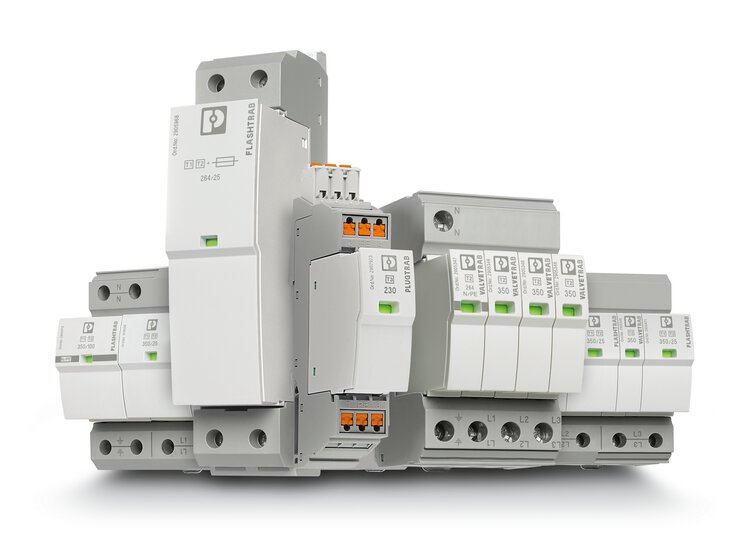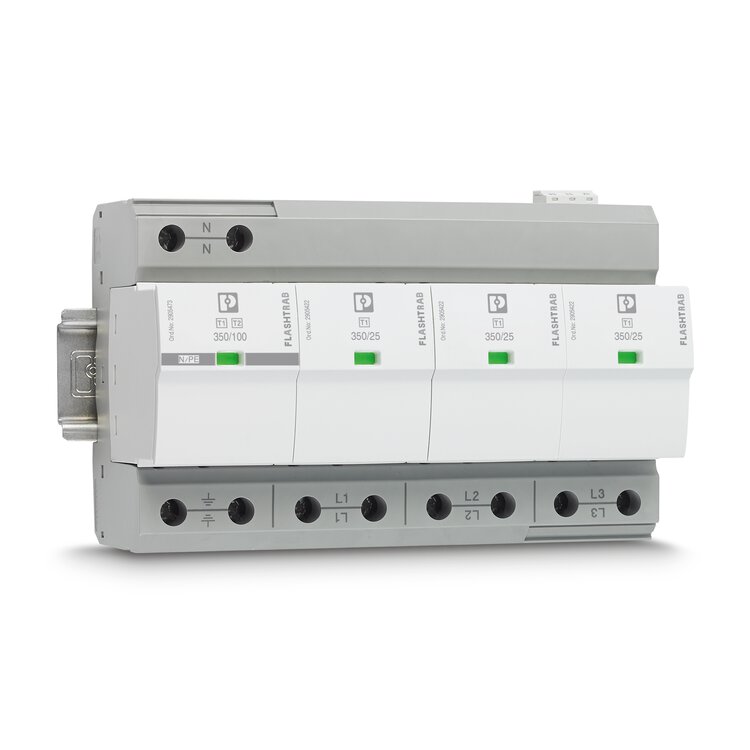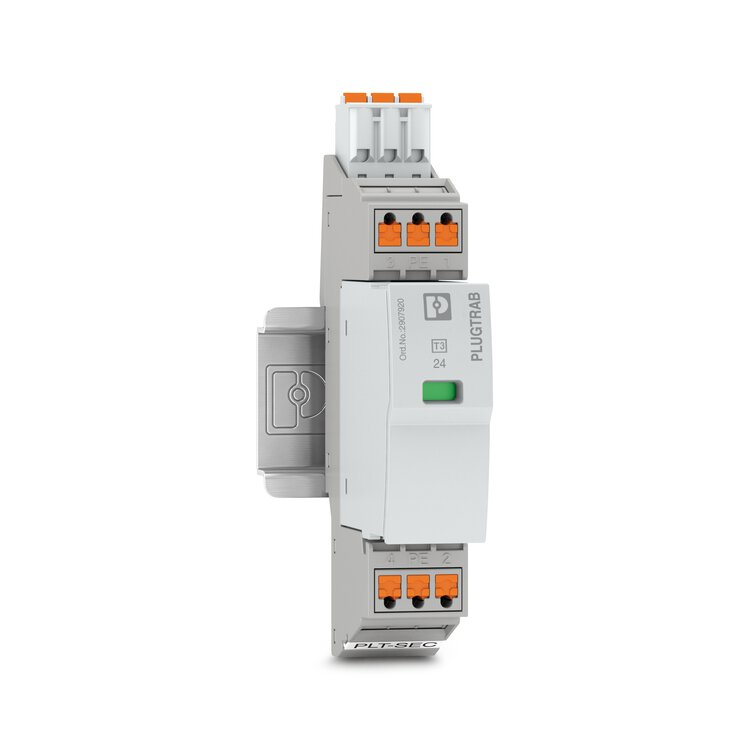Type 1 combined lightning current and surge arresters are used in unmetered areas. They must satisfy the most stringent requirements, as they are supposed to protect against the effects of direct lightning strikes. The demand placed on the short-circuit current rating is very high in a typical main distribution installation environment. In order to be able to meet these requirements, powerful technology, such as spark gap technology, is required.
Type 1+2 combined lightning current and surge arresters are lightning current arresters which, in addition to the lightning current test, also fulfill the required tests of type 2 surge protective devices. The Type 1+2 special combined lightning current and surge arrester offers a special feature. It combines powerful spark gaps directly with varistor-based surge protective devices.
Type 2 surge protective devices with a low discharge capacity are installed in the metered area. They are generally installed in subdistributions or machine control cabinets. These surge protective devices must be able to discharge induced overvoltages from indirect lightning strikes or switching operations, but do not have to handle direct lightning strikes. Discharge technology with fast response behavior – such as varistor technology – has proven itself here.
Type 3 surge protective devices with the lowest discharge capacity, also known as device protection, are installed as close as possible to the end device. Special surge protective devices are needed for signal lines. These are also installed immediately upstream of the end devices to be protected. The devices are available in a wide range of designs to suit the various different installation environments. In addition to standard DIN rail mounting, there are products for installation in sockets or for direct mounting on a PCB of the end device.
Technologically speaking, type 3 surge protection is similar to type 2, which is based on varistors, but the requirements concerning discharge capacity are even lower compared to type 2. Type 2/3 surge protection is provided above all on cables that lead into a building from the outside.







